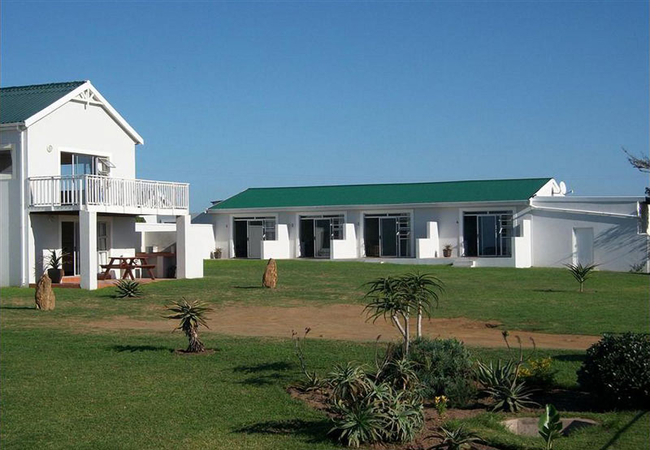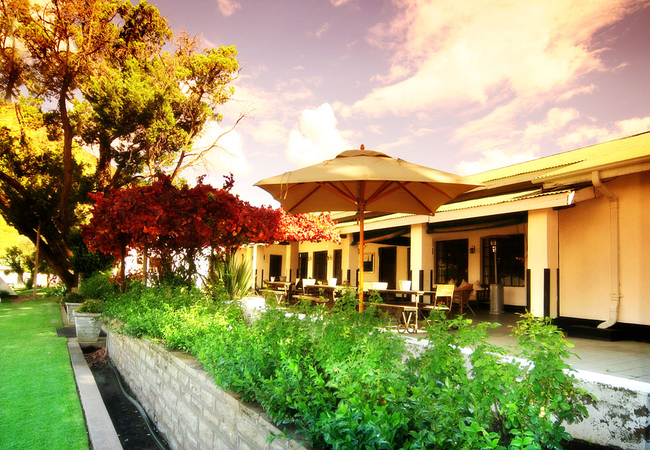Keiskammahoek, Amatola
Not many people know where Keiskammahoek is.
Those who do travel the lesser-known roads of the Eastern Cape between King William's Town or Fort Hare, and Stutterheim - up the Red Hill and Dontsa passes - to reach it, before taking the crook of the R352 east.
The mountain passes to Keiskammahoek suggest hills and, indeed, the village rests in the foothills of the Amatola Mountains. The little, mainly Xhosa stronghold, lies in an otherwise drought-stricken part of the country. But here the Keiskamma and Gxulu Rivers meet, meaning the town is never without water.
The name Keiskammahoek is a combination Dutch and Khoikhoi name that, when translated, literally means 'corner of shining waters'. Before 1847 this former Ciskei community was known as Qobo Qobo, or 'fragile thing'.
Most people who visit Keiskammahoek come here for the history. There are still remnants of incredible architectural heritage that date back to a time when the village was known as 'the camp in the mountains' – a British military outpost during the border conflict of 1846.
For a short-lived period after the conflict Keiskammahoek became a Scottish mission station (known as Uniondale, interestingly), but further border hostilities put paid to the venture as the British once again established a camp here.
After erecting a fortified tower the colonial government declared the area a Royal Crown Reserve and settlers began building homes at Keiskammahoek, joined by German legionnaires and their families in 1857 and 1858.
Today as many as 50 of the initial churches, chapel and buildings remain, part of an architectural heritage worthy of preservation and restoration.
Most of these buildings line the main street through town, a group of architecture colonial in character. Another cluster lies around the old mill. Seven churches, a library, a hotel, a village hall and shops, a little pioneer cottage and larger homes date back to the 1920s and even as far back as the late 19th century.
Blueberries are grown around Keiskammahoek on farms like Thornhill farm, a private-public sector initiative whose goal it is to establish a blueberry belt in the area, and provide employment to those who otherwise, live predominantly on grants from the State.
Stay: Cata Lodge at Cata Village, 17 km from Keiskammahoek, is a community-owned and run initiative that includes chalets and homestays with Cata Village families.
From there you can hike the Cape Parrot Day Hiking Trail, mountain bike, bird watch and flyfish. A highlight is the Heritage Trail that includes a visit to the only museum in the country that tells the story of rural land dispossession.
In the vicinity
Hotels & other accommodation options

Tayside Guest House
Tayside Guest House offers comfortable accommodation on a hill overlooking Kidds Beach and the sea. From here you are 25km away from East London ...

Rockford Lodge at Lowestoffe
Rockford Lodge on Rockford Farm is about 14km from Hogsback in a magnificent setting. The lodge has four bedrooms (one double and three twin room...

At One Lodge
At One Lodge offers excellent accommodation and is situated conveniently close to the Guild Theatre, Selborne Schools and Selborne Park. The esta...

Hoylake Inn
Owner managed, Hoylake Inn is situated Bunkers Hill in East London and boasts beautiful ocean views. This safe and friendly establishment has wel...

Peppertree House
Named after a majestic Pepper tree which was over hundred years old and once served to provide shade for visitors' horses we offer our guests com...

South 2 Sea Gonubie
South 2 Sea Gonubie offers accommodation in a unique cottage with a lovely, open plan layout and two suites. Situated in a quiet neighbourhood, t...

Tidewaters Bed and Breakfast
Tidewaters is situated on the tranquil Gonubie River. If a luxurious, relaxed venue is what you are looking for - with walks along the peaceful r...

Blanco Guest Farm and Holiday Resort
Blanco Guest Farm and Holiday Resort has been providing accommodation for over 100 years. Tucked away at the foot of the Winterberg Mountains, ju...

Blanco Country House
Blanco Country House offers accommodation in Tarkastad at the Blanco Guest Farm, nestled underneath Kranskop Mountain where guests can experience...
Things to do in the area

Cata Village Museum
The rural Xhosa village of Cata lies close to the town of Keiskammahoek in the Amatole Mountains, surrounded by indigenous forest and grasslands....

Gubu Dam MTB Route
Where: Gubu Dam, 20 km west of StutterheimLevel: intermediate (this is not for beginners)Type of route: circular; no single trackHow long: 25 kmB...

Andersons Dam Trail
For a fun filled family day out, grab a picnic basket, rustle up the kids and head to the Andersons Dam Trail. The 8 kilometer walk is easy and s...

Day Visit to Mgwali Village
Experience true Xhosa hospitality on the delightful day trip of Mgwali Village, the oldest village in Eastern Cape. Taste traditional food and en...
Noteworthy attractions

Steve Biko Garden of Remembrance
Bantu Steven Biko, one of the most recognised leaders of the Black Consciousness Movement, is regarded as one of the greatest martyrs of the anti...

East London Golf Club
The East London Golf Club, skilfully fashioned out of dense coastal bush, hills and dunes, just a few metres away from the warm water of the Indi...

West Bank Golf Club
The West Bank Golf Club, which celebrated its centenary in October 2007, has an 18 hole golf course rated as Number 93 in South Africa. Enjoy lov...

East London Museum
The East London Museum has the world's only dodo egg, a large natural science collection, collections ranging from the prehistoric times of South...

East London Beaches
Think warm Indian Ocean waters and sub-tropical weather that allow visitors to enjoy the climate all year round - East London basks gloriously be...

East London City Hall
The foundation stone of the stately East London City Halll was laid in 1897. The clock tower commemorates the diamond jubilee of Queen Victoria. ...

East London Coast Nature Reserve
The East London Coast Nature Reserve is a gorgeous stretch of coast that extends from the Great Kei River in the north east all the way to the Ty...

Amalinda Nature Reserve
The Amalinda Nature Reserve is situated less than 10 kilometres from the ever-growing city hub of East London in the Eastern Cape. Established in...

Fort Fordyce Nature Reserve
Set close to the little community of Blinkwater, Fort Fordyce Nature Reserve lies on the Post Retief road, almost equidistant between Adelaide an...
Find accommodation in Keiskammahoek
FIND / South Africa Accommodation / Eastern Cape Accommodation / Amatola Accommodation / Keiskammahoek Accommodation
